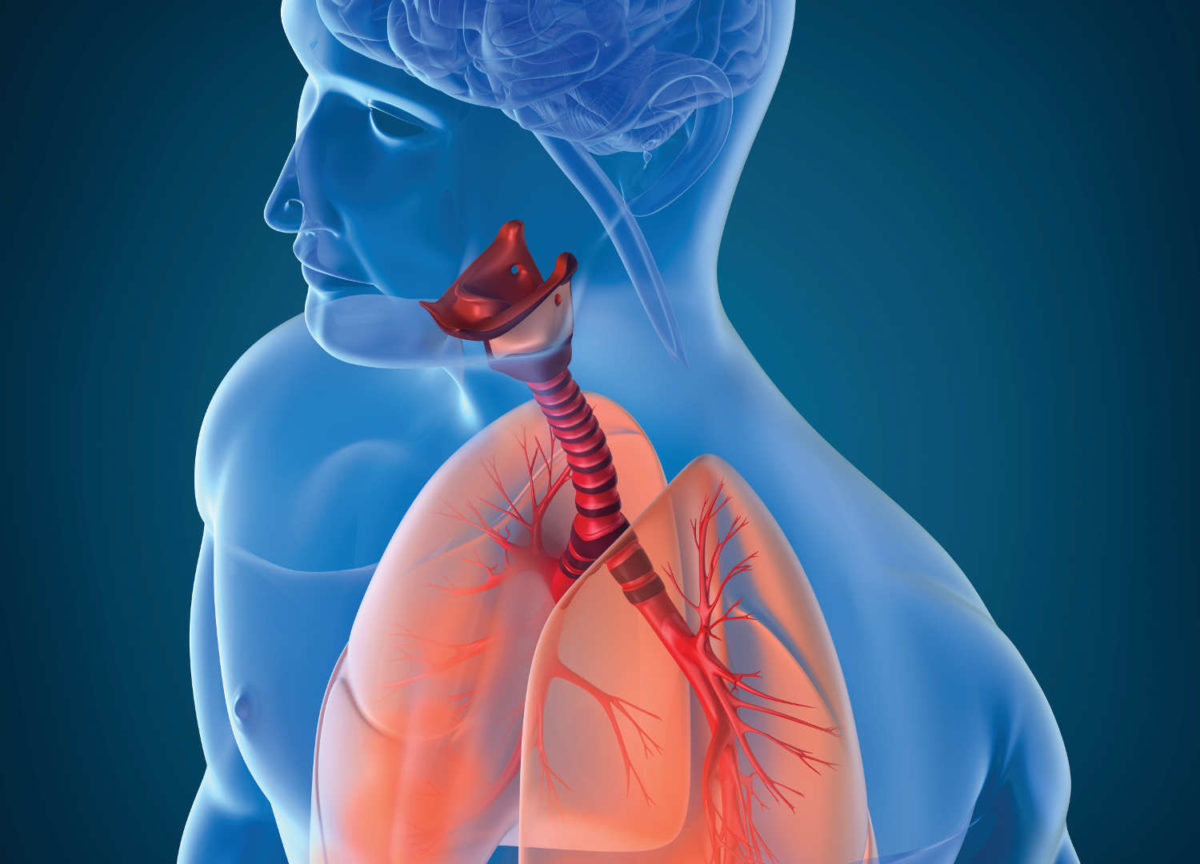Interventional Pulmonology
Using minimally invasive techniques to diagnose and treat lung cancer and other serious conditions provides patients an improved quality of life.

When a patient experiences symptoms that cause discomfort, such as shortness of breath, coughing, or chest pain, it could be an indication of a more serious condition such as lung cancer or a disease of the respiratory system. Many people with lung cancer will accumulate pleural effusion (excess fluid around the lungs), which may cause pain, shortness of breath and other complications. It is estimated that 30 percent of lung cancers lead to some obstruction of the airway, causing symptoms such as wheezing, respiratory failure and uncontrolled cough.
Touro’s Dr. Neil Ninan, the only board-certified interventional pulmonologist in New Orleans, offers patients minimally invasive treatments for the diagnosis and advanced treatments of diseases of the lungs and respiratory system, such as:
Airway obstruction (due to any abnormal growth)
Mediastinal and hilar adenopathy (enlarged or swollen lymph nodes)
Undiagnosed lung nodules and masses
Primary lung cancer
Other cancers that metastasize to the lung
Pleural diseases (including effusions or undiagnosed disease)
Bronchopleural fistulas (abnormal passageways that develop between the lungs and lung membranes)
By using advanced bronchoscopic and pleuroscopic techniques, Dr. Ninan is able to perform minimally invasive interventional procedures through the airways and chest cavity to remove obstructions in the airway or fluid around the lungs, thereby immediately reducing the symptoms that were causing discomfort. “Not only do these symptoms impact a patient’s quality of life, they also may delay or interrupt the success of a patient’s other treatments,” Dr. Ninan says. “It is not uncommon for our patients to wake up after the procedure and want to hug the medical staff because they are so happy that they can breathe again.”
Besides helping patients breathe better, Dr. Ninan uses advanced, minimally invasive techniques to deliver treatments without performing surgery. The techniques, such as the rigid bronchoscopy, are used to remove endobronchial tumors or deliver laser and other cancer-killing technologies to tumors buried deep inside the lungs or open airways.
Dr. Ninan finds his work as an interventional pulmonologists to be very satisfying because of the recent medical and technological advancements. “We can provide faster and more accurate diagnoses than ever before, and the treatments and techniques to treat the problem are becoming less invasive,” he says. “For example, if a patient has fluid buildup in the lungs, we can insert an indwelling pleural catheter within the chest cavity where the pleural fluid accumulates and teach the patient how to drain it from home using special sterile supplies.”
An Individualized Approach to Lung Cancer
“Before you begin treatment, we’ll use state-of-the-art diagnostic tools and procedures to accurately diagnose and stage the disease,” Dr. Ninan says. “Because each cancer type requires a different approach, your treatment plan will be based on your unique needs and treatment goals.” For example, a needle or forceps may be inserted through the bronchoscope to get a sample of the lung tissue or nearby lymph node and then biopsied to detect cancer, infection, sarcoidosis and other conditions.
The next step would be to use imaging technology to perform an endobronchial ultrasound or navigational bronchoscopy to look for enlarged lymph nodes or a lung mass. In an endobronchial ultrasound, a bronchoscope (a probe with a tiny camera) is combined with ultrasound to identify lymph nodes and masses outside of the airways. Alternatively, in a navigational bronchoscopy, electromagnetic technology combined with 3-D imaging creates a virtual roadmap of the lungs. These technologies help Dr. Ninan guide a set of catheters through the lungs’ most complex airways and find lesions that cannot be seen within the airway.
For people with lung cancer or other cancers, the biopsies performed by interventional pulmonologists can often accurately identify the spread of cancer into lymph nodes. This can prevent unnecessary surgery or help determine the best choice for treatment.
As an interventional pulmonologist, Dr. Ninan works closely with pulmonologists, oncologists, radiation oncologists, critical care physicians, thoracic surgeons, cardiovascular specialists and other experts to tailor treatments to each patient’s specific needs. “The goal is always to preserve more of their lung function and to reduce the side effects of treatments,” Dr. Ninan says. “As doctors, I believe our job is to make the world a better place. We have the potential to help hundreds, perhaps thousands of patients throughout our careers. It’s an enormous responsibility. I am excited about our capability to help people, and I am happy to work with such a great team here at Touro.”
